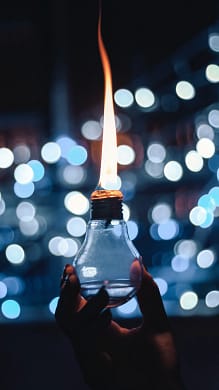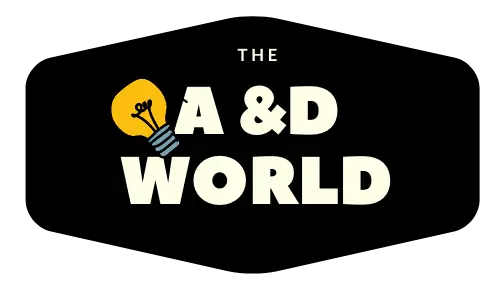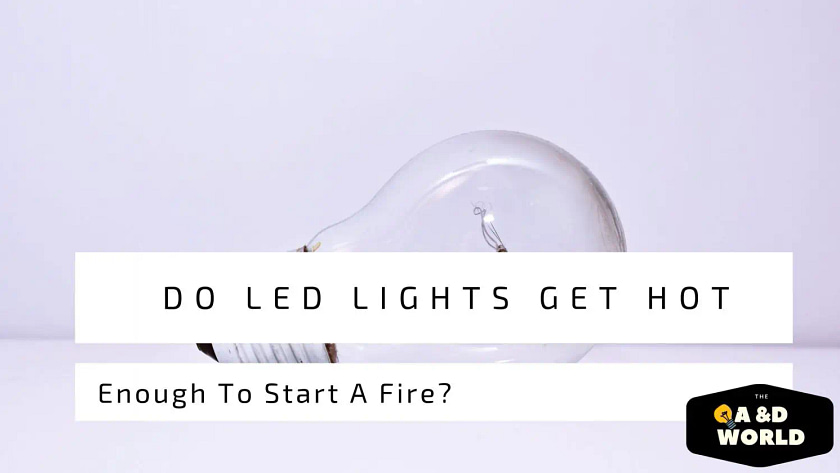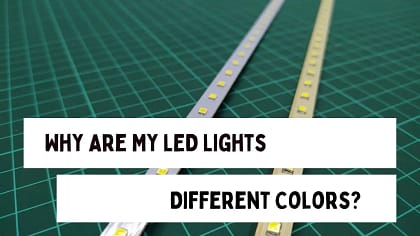LEDs are new compared to incandescent or halogen. I grow up using these traditional bulbs, so I understand your uncertainty. However, after doing a lot of research on the topic, I can answer your questions. If you think LEDs can cause a fire, then you are wrong.
If there are still incandescent bulbs in your home, then you are at a higher risk of a fire. LEDs produce less heat than traditional bulbs and have many benefits like lower electricity bills and are better for the environment.
Light-emitting diode stands for LEDs. They use semiconductors that allow electrical current to pass through, creating light. Whatever heat LEDs do not use is absorbed by the heat sinks. Further, LEDs run cooler than incandescent bulbs.
Can LED lights cause a fire?
How LEDs deal with the heat lies strongly in their heat sinks. This component absorbs the heat the LED fixture produces and disperses it into the surrounding area.
Because of the heat sinks, LEDs will not burn out nor overheat. Therefore, it is safe to say that LEDs will not cause a fire because they have great thermal management.
The location of your LEDs can increase their risk of overheating. While LEDs have heat sinks, keeping them in hot places can degrade and shorter their lifespan. But it will not cause a fire. These fixtures will faster burn out and stop working before a fire starts.
However, not everyone can experience such luck. For instance, according to the Cheshire fire and rescue team, a Cheshire resident used a 20-watt energy-saving bulb on an 11-watt fixture. This mishap resulted in a fire where she suffered burns to her head.
Do LED lights get hot enough to start a fire?

According to a study, traditional bulbs raise your home temperature 10 degrees more depending on how long it was left on and how many are there in the home.
Therefore, because LEDs produce less heat, they are more energy-efficient. LEDs do not suffer from overheating unless they are made from cheap parts. The life span of incandescent bulbs is 2,000 hours, whereas LEDs are 20,000-50,000 hours.
If your LEDs overheat, they will dim rather than melt the fixture or ignite.
Light Bulbs Heat Chart
| LEDs | Compact fluorescent light bulbs | Incandescent |
| 20-50% | 40% | 90% |
Can I Leave My LED Lights On All Night?
Yes, LEDs are very energy efficient so, you can leave them overnight. However, if they are not in use, leaving them on 24/7 is a waste of energy. Creating electricity requires a lot of energy which can be harmful to the environment. Thus, leaving on your bulbs when you don’t need them causes light pollution.
Can LEDs Stay On For A Long Time Safely?
LED bulbs (light-emitting diodes) are long-lasting, energy-efficient lights that are quickly replacing traditional incandescent bulbs.
LEDs are popular for their longevity. You can expect at least 25,000 hours of life from an LED bulb, which is about ten times longer than a traditional incandescent bulb. But like all light sources, LEDs will eventually burn out.
While LEDs are extremely reliable and require little maintenance, they have a limited lifespan — just not nearly as limited as incandescents. To maximize the life of your bulb, follow these tips:
Turn off lights when they’re not in use.
Do not leave your lights on 24/7. Instead, use timers or motion sensors. So they don’t stay on when you’re not around or sleeping.
Use dimmers
If you are like me and hate sleeping in the dark, dimmers can come in handy. It can save electricity and lower the heat output of the bulb because it is not functioning at 100% capacity.
Can String Lights Catch Fire?
The answer is yes, but the odds are very low. Can you imagine what would happen if all the string lights in your home caught fire? That would be a disaster!
Like with many lights, overheating is your biggest concern. Overheating occurs when there is inadequate ventilation for the heat generated by the bulb itself, poor wiring, or insufficient power supply.
One way to decrease overheating is to place string lights in cool environments. Also, ensure your lights comprise quality parts.
Power cord failures are another reason your string lights are a fire hazard. Most LEDs use a line voltage (120V) or low-voltage (12V or 24V), so they require a proper power adapter that can handle their voltage. Thus, if there are too many strings, your power cord can fail, making your lights unsafe.
Moreover, keep string lights away from materials that can catch fire. Things like curtains and bed sheets can ignite easily with the added heat of these lights.
Home Electrical Fires Facts And Statistics
- The ESFI has estimated 51,000 electrical fires with nearly 500 deaths and 1.3 billion dollars in property damage.
- One-third of structural fires result from electrical problems.
- Almost 48% of all electrical fires involve electrical distribution equipment such as light bulbs or wiring.
- December and January have the highest electrical fires (Christmas holidays).
- The origin of fires starts in bedrooms 14% or the attic(12%), and the kitchen (11%).
- In the US, the CPSC reports electrical receptacles, cause 5,300 fires and 100 deaths yearly.
- Having a working smoke detector can decrease fire deaths.
LEDs Safety
Don’t use LEDs if you have an older fixture that heat or water has damaged.
Check the wattage of your fixtures before purchasing LEDs. If the bulb wattage is higher than the fixture watt, it can cause overheating and possibly fire.
Don’t use LED lights that aren’t designed for outdoor use outside.
Keep LEDs away from curtains or other materials.
My Thoughts
LEDs do not get hot as traditional bulbs and will not cause a fire. If your LEDs overheat because of faulty parts, then they will burn out rather than start ablaze. However, if you use a higher wattage than the fixture requires, you can increase the chances of a fire.
There are many benefits to having LEDs: these include a longer life span and energy efficiency.





